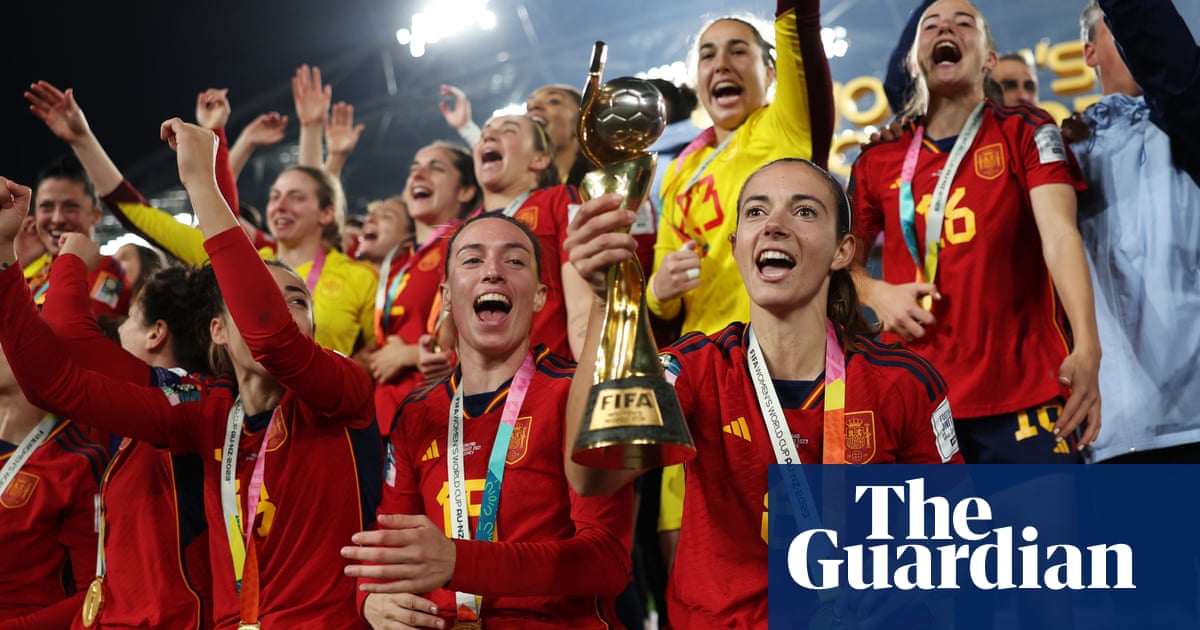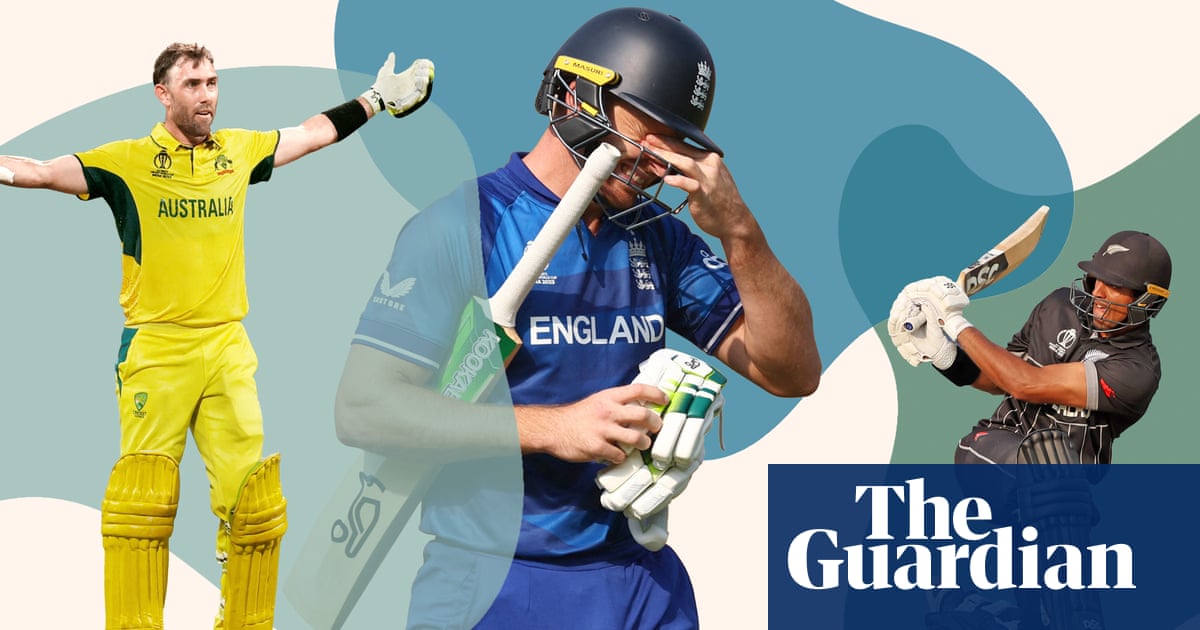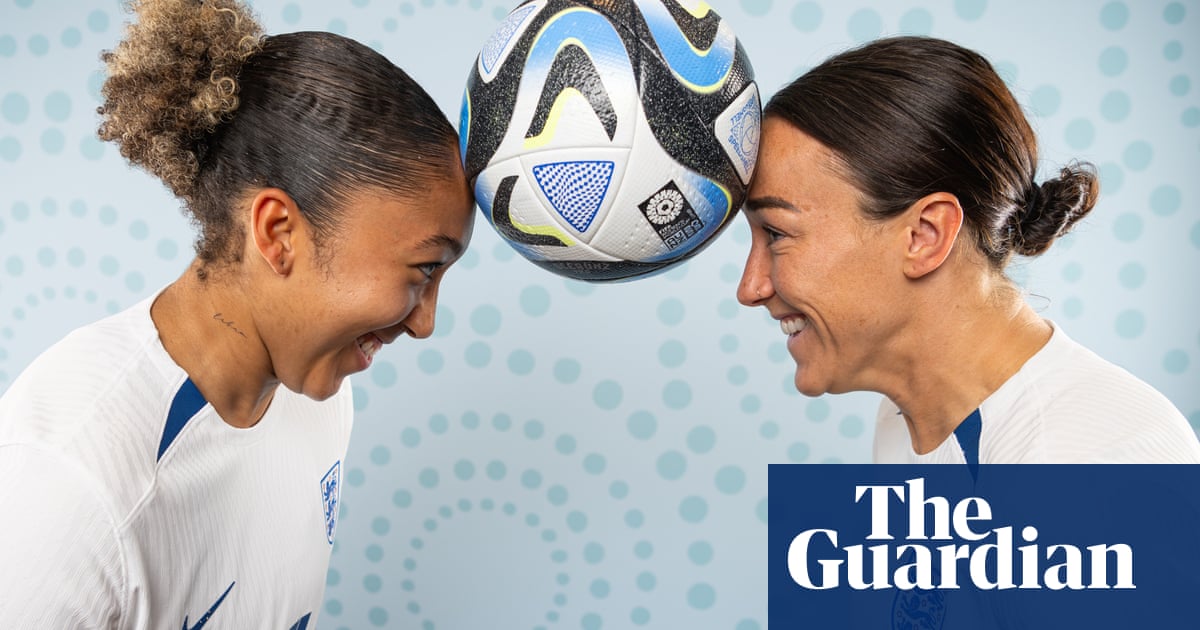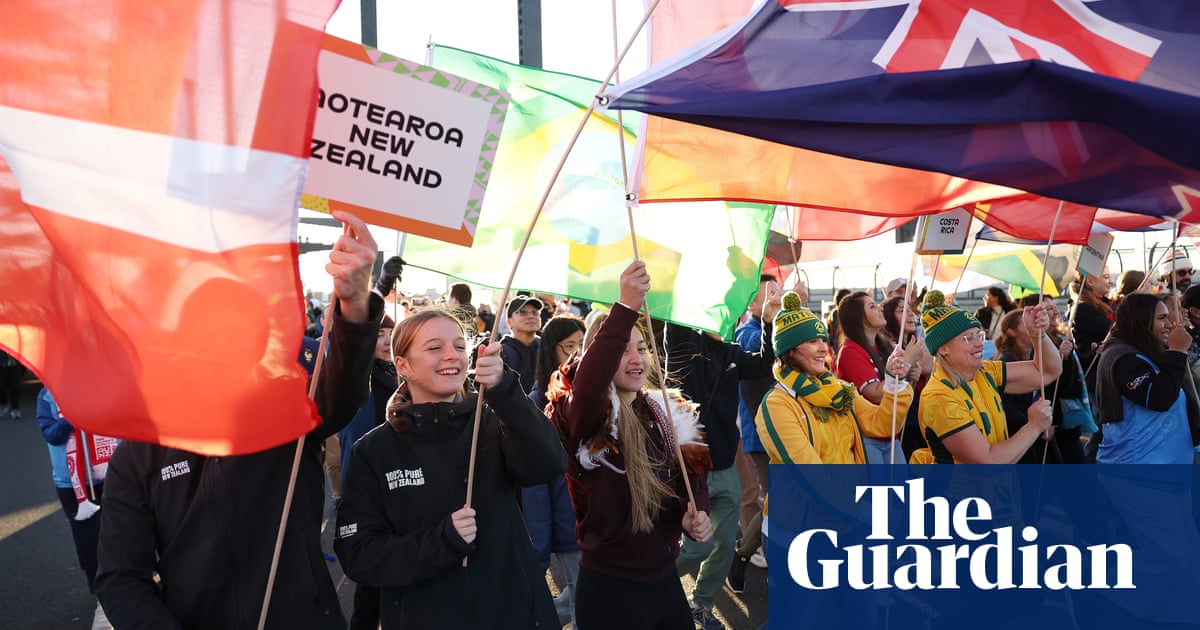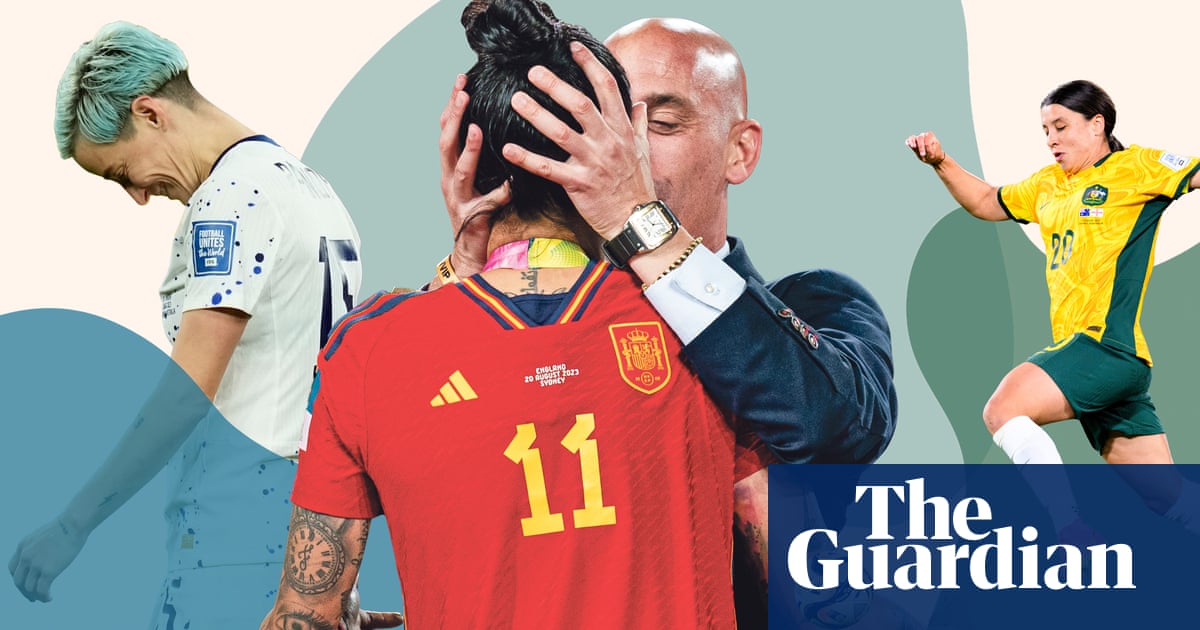
In a year where the actions of the disgraced former Spanish football federation president Luis Rubiales and, more recently, Joey Barton’s sexist rampage have dominated headlines, you could be forgiven for thinking 2023 was a year of setbacks for women’s football and women in football. Yet those incidents, and others, have only looked more ludicrous when contrasted with a Women’s World Cup that captured hearts and generated the second‑highest income for any global sporting event – behind the men’s World Cup.
Ian Wright said it best before the Euro 2022 final, in his characteristically passionate and charming way: “We don’t need to worry about the dinosaurs. I saw someone say something about the dinosaurs screaming at the meteor. I love it – that’s what those negative people are. See how many millions of people have been watching these women play – there’s people out there for this game.”
The good
The people out there for this game? Well, there was a peak audience of 12 million watching the final of the Women’s World Cup between England and Spain on BBC One, with a further 3.9 million watching on iPlayer and the BBC Sport website and app. In Spain, RTVE’s main channel La 1 secured a peak audience of 7.38 million viewers, an audience share of 71.1%. Staggeringly, 53.9 million in China watched the country’s 6-1 defeat by England in their final group match, while the audience in the co-hosts Australia peaked at 11.15 million for their semi-final defeat by England. Meanwhile, total in-person attendance was 1,978,274 for the 64 games played across 10 stadiums in Australia and New Zealand.
The figures don’t tell the full story though, because they don’t capture how extensively the tournament infiltrated Australian consciousness for just over four weeks. It was next level and a world away from the indifference encountered by fans attending the previous edition in France in 2019. Then, you felt as if you were part of a secret society, working your way through cities undetected, to stadiums that locals assumed had wound down for the summer. In Australia the host cities hummed to the tune of the tournament: street vendors asked about tickets, office workers added green and yellow scarves to their suits, taxi drivers chatted keenly about Sam Kerr’s hamstring and there was advertising and merchandise everywhere.
Then, there was the football, Spain leading the way, fighting to a first senior international trophy in style against a backdrop of internal turmoil that would be fully thrust in the spotlight after their triumph. For Australia there was catharsis in Kerr’s stunning solo strike against England after they had been deprived of their talismanic forward for much of the campaign. The Lionesses would score twice more after Kerr’s leveller to break the hosts hearts and deliver passage to a first World Cup final, despite the absence of the European Championship captain Leah Williamson, the Euro 2022 golden boot winner Beth Mead and the influential No 10 Fran Kirby.
The Morocco defender Nouhaila Benzina became the first woman to wear a hijab in a match at the World Cup as the debutants made the last 16. Then there was the outstanding arrival on the world stage of Colombia’s 18-year-old Linda Caicedo who, days after collapsing in training, scored the first goal in a 2-1 shock victory against Germany as her team worked their way into the knockout rounds. Add the stunning form of Japan until they were halted by Sweden at the quarter-final stage and there was some sumptuous football played.
The bad
We’ll save the controversies for the “the ugly” but, realistically, “the bad” and “the ugly” could be merged into one giant section ripping into Rubiales, Fifa and many national federations for their treatment of teams and players in and around the tournament. That, though, wouldn’t allow space for us to talk about “the bad” on the pitch … and there was a lot of it.
Germany were among the favourites going into the tournament and it seemed inconceivable they would not escape a group containing Colombia, Morocco and South Korea. It looked even more inconceivable after they started with a 6-0 win against Morocco. Defeat by Colombia, though, then a 1-1 draw with South Korea meant the Euro 2022 runners-up finished third in Group H. The head coach Martina Voss-Tecklenburg was sacked three months later despite having signed a new contract earlier in the year.
Another big scalp was taken in the last 16, with Sweden securing a penalty shootout victory against USA, the holders and four-time winners. The 2019 World Cup golden boot, golden ball and Ballon d’Or winner, Megan Rapinoe, missed a spot-kick, which she described as “dark comedy”. Her penalty, one of three missed by USA in the shootout, was Rapinoe’s final action for her team at a major tournament, the forward having announced beforehand her intention to retire. So often her team’s saviour, as she was in 2019, where her two goals helped USA past France and to the final, her World Cup ended in tears. It was a similar story for two other greats of the game, with Canada’s Christine Sinclair, the world’s most capped international, and Brazil’s Marta also going out in the group stage at their last World Cup.
The ugly
There was so much that was ugly around the Women’s World Cup, making the successes of the tournament all the more impressive. It was evident before a ball was kicked, as teams protested over inequalities, inequity, unpaid wages and poor conditions. In the run-up to the tournament, Canada’s players threatened strike action over what they perceived as discriminatory treatment, Zambia battled (and continue to battle) unpaid wages and bonuses, South Africa players boycotted a pre‑tournament friendly over unpaid bonuses, England players called out the Football Association after talks over performance‑related bonuses broke down, Nigeria threatened to boycott their first opening match of the tournament over unpaid bonuses and later spoke of the conditions around their campaign which included having to share beds, and four days into the tournament Australia players called for equal prize money with the men’s World Cup.
These issues undoubtedly stunted the ability of teams to show their best. Given how impressive the football was despite these trials, the positive is that it shows the development of the sport is far from reaching its peak, where players are provided with everything they need, materially and environment-wise.
There was also the pre‑tournament armband fiasco, as Fifa moved to stop teams from donning the OneLove band designed in support of the LGBTQ+ community. With the rainbow armband outlawed and England planning to wear the OneLove alternative in Australia, Fifa stepped in, creating armbands supporting eight issues to water down the planned impact and to give countries a way of avoiding it.
Rubiales. Need we say more? The actions of the then RFEF president after Spain’s win against England in the final overshadowed his team’s historic and heroic victory. He was shown grabbing his crotch in celebration, kissing Jenni Hermoso on the lips, behaving inappropriately with other players and lifting Athenea del Castillo over his shoulder. His actions reflected the macho culture that Spain’s players have been battling for decades. That it took Rubiales’s actions being broadcast around the world for the players to be believed and understood after decades of protest about the culture around the team, including 15 players withdrawing from selection to protect their mental and physical health after their exit from the Euro 2022, is truly damning. There are positives, in that Rubiales has been banned from football for three years, the manager Jorge Vilda has been removed and the players have felt their power.
Lessons learned
There is no sign that the progress of the World Cup, or the women’s game more broadly, is slowing. By the time teams take the pitch in 2027, there will be equal prize money with the 2026 men’s edition. Fifa now needs to make sure that the proportion of that money allocated for players actually reaches them and is not held back by federations. It also needs to ensure that players’ voices are heard, that reporting mechanisms at national and international level are robust and that education takes place throughout world football on what is and isn’t appropriate behaviour. It would also be nice to know where the World Cup will be held. We know where the 2026, 2030 and 2034 men’s World Cups will be held; it is frankly farcical that we are still waiting for the 2027 Women’s World Cup hosts to be announced.
Get in touch
If you have any questions or comments about any of our newsletters please email moving.goalposts@theguardian.com.





